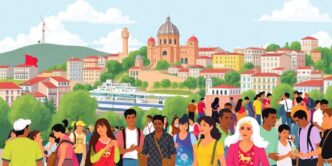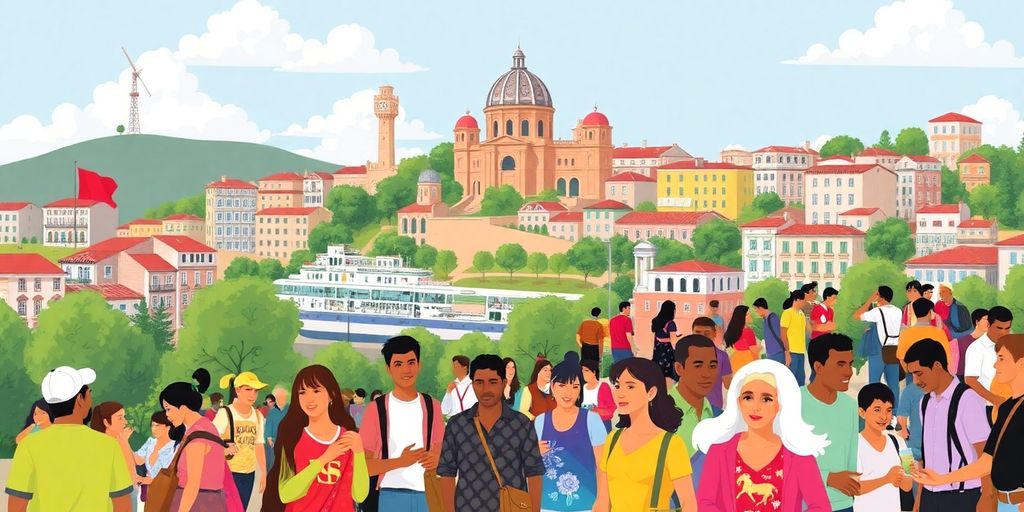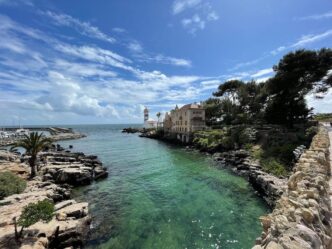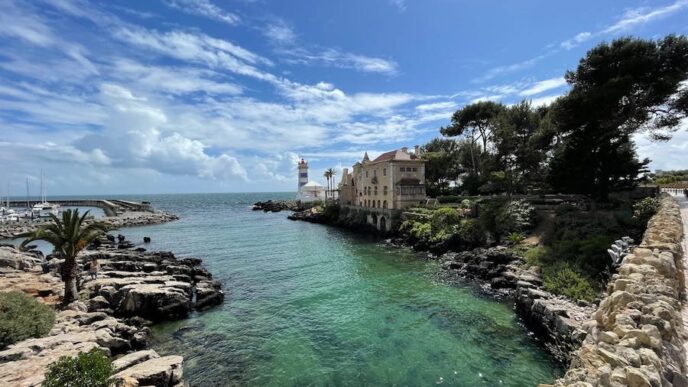So who are, Portugal’s population?
It’s a bit of a mixed bag with aging folks, immigration, and changing family habits. All these shifts are shaking things up economically, socially, and even environmentally. So, let’s break it down and see what it means for Portugal moving forward.
Demographic Shifts in Portugal
Aging Population and Its Implications
Portugal’s population is getting older. People are living longer, thanks to better healthcare and living conditions. But this also means more people are retiring and fewer are working. This shift can strain public services like healthcare and pensions. More elderly people might need special care and housing, which can be costly.
Role of Immigration in Population Growth
Immigration plays a big role in Portugal’s population changes. Many people move to Portugal for jobs and a better life. This helps balance the aging population, bringing in younger workers. Immigrants also bring new cultures and ideas, which can enrich society. But it’s important to have policies that help immigrants integrate smoothly.
Fertility Rates and Family Dynamics
In Portugal, fewer babies are being born. Families are getting smaller, often with just one or two kids. This is due to various reasons like economic pressures and lifestyle choices. Lower fertility rates mean fewer young people in the future, which can impact the workforce and economic growth. Encouraging family-friendly policies might help address this issue.
Portugal is facing a big demographic shift. With an aging population, immigration becomes crucial to keep the economy stable. At the same time, understanding family dynamics and promoting higher birth rates could help balance the demographic scales in the long run.
Economic Impact of Population Changes
Labor Market Trends and Challenges
Portugal’s labor market is feeling the pinch from demographic shifts. The working-age population is shrinking due to an aging populace, but immigration is providing some relief. Immigrants often fill gaps in sectors like healthcare and construction, where there’s a real need for workers. However, this doesn’t completely solve the problem. There’s still a mismatch between the skills available and what’s needed, leading to challenges in fully utilizing the workforce.
- Aging Workforce: As more workers retire, there’s a gap left in experience and skills.
- Skill Mismatches: New entrants, especially from different countries, may need retraining to meet local industry demands.
- Rising Dependency Ratio: More retirees mean fewer workers supporting the economy, increasing pressure on social services.
Influence on GDP and Economic Growth
The population changes have a direct impact on Portugal’s GDP. While the overall GDP is on the rise, GDP per capita isn’t keeping pace. This is largely due to the increase in population from immigration. While immigrants help boost economic activity, the benefits aren’t evenly spread across the population.
| Year | GDP Growth (%) | GDP Per Capita Growth (%) |
|---|---|---|
| 2019 | 6.3 | 3.7 |
| 2023 | 15.0 (proj) | 9.0 (proj) |
The table shows how GDP and GDP per capita are expected to grow, but there’s a clear gap. This reflects the challenges of integrating immigrants economically and socially.
Public Policy Responses to Demographic Changes
Portugal’s government is actively responding to these demographic shifts. Policies are being crafted to address the labor market’s needs and to ensure sustainable economic growth. Some of these policies include:
- Training Programs: Initiatives to upskill both locals and immigrants to better match job market demands.
- Incentives for Retirees: Encouraging later retirement or part-time work to keep skilled workers in the labor force longer.
- Immigration Policies: Adjusting immigration rules to attract workers with skills that are in short supply.
The 6th Ministerial Conference of the 5+5 Dialogue in Lisbon highlighted the importance of regional cooperation in addressing these economic challenges, especially in light of Portugal’s evolving political landscape.
Migration Patterns and Their Effects
Historical Migration Trends
Portugal’s migration story is a tapestry woven over centuries. In the mid-20th century, waves of Portuguese left the country, seeking better opportunities in places like France and the United States. This trend shifted in the late 20th century when Portugal became a destination for immigrants, mainly from former colonies such as Brazil and Angola. The migration patterns have had profound effects on the country’s demographics and economy.
- 1950s-1970s: Large-scale emigration to Europe and the Americas.
- 1980s-1990s: Shift towards becoming a host country for immigrants.
- 2000s-Present: Increased diversity with immigrants from Eastern Europe and Asia.
Current Immigration Policies
Portugal’s immigration policies are shaped by its need for labor and demographic challenges. The government has implemented policies to attract skilled workers and address population decline. These policies include streamlined visa processes and incentives for foreign professionals.
- Skilled Worker Visas: Easier access for professionals in high-demand sectors.
- Family Reunification: Policies to support the integration of immigrant families.
- Pathways to Citizenship: Simplified processes for long-term residents.
Impact on Cultural and Social Dynamics
The influx of immigrants has enriched Portugal’s cultural landscape. Cities like Lisbon and Porto have become melting pots of cultures, with vibrant communities from around the globe. This diversity has sparked cultural exchanges and influenced everything from cuisine to music.
The blend of cultures in Portugal has not only enriched its social fabric but also contributed to economic growth by filling labor gaps and fostering innovation.
The dynamic between locals and immigrants continues to evolve, with ongoing discussions about integration and social cohesion. As Portugal navigates its political landscape ahead of the 2026 presidential election, these discussions are more relevant than ever.
Future Projections for Portugal’s Population
Predicted Population Growth Rates
Looking ahead, Portugal’s population growth is anticipated to be modest yet steady. According to projections, the population will see a slight increase, primarily driven by net migration rather than natural growth. The natural birth rate remains low, with more deaths than births, but this is balanced by an influx of immigrants seeking opportunities in Portugal’s evolving economy. Here’s a quick look at the projected growth rates:
- 2024: A slight rise, primarily due to immigration.
- 2025: Continued growth, with net migration remaining the key factor.
- 2026: Growth stabilizes as immigration policies adjust.
Long-term Demographic Challenges
Portugal faces several demographic hurdles in the long run. An aging population is at the forefront, with a significant portion of the population entering retirement age. This shift poses challenges in terms of healthcare, pensions, and workforce sustainability. Additionally, the low fertility rate continues to be a concern, necessitating policies that encourage family growth and support for young families.
- Aging Population: Increasing demand for healthcare and pension reforms.
- Low Fertility Rates: Need for incentives to boost birth rates.
- Workforce Sustainability: Balancing the aging workforce with skilled immigration.
Strategies for Sustainable Development
To tackle these challenges, Portugal is exploring various strategies aimed at sustainable demographic development. Emphasis is being placed on improving immigration policies to attract skilled workers and integrating them into society effectively. Moreover, there’s a push towards enhancing family support systems to encourage higher birth rates.
- Immigration Policies: Focus on attracting skilled labor to fill workforce gaps.
- Family Support: Initiatives to make parenting more affordable and accessible.
- Healthcare Reforms: Adapting systems to cater to an aging population.
“Portugal’s demographic future hinges on its ability to adapt to these challenges while fostering a society that is inclusive and supportive of both its aging population and new immigrants.”
In summary, while Portugal’s population is set to grow modestly, the country must address significant demographic challenges to ensure a balanced and sustainable future.
Social and Cultural Implications of Population Trends
Changing Family Structures
In Portugal, family dynamics are shifting. More people are choosing to live alone or delaying marriage, which means smaller households are becoming the norm. This change has a ripple effect on housing needs, with a growing demand for single-occupancy homes. The traditional extended family setup is also less common, as younger generations are moving away from their hometowns for work or education. This shift can lead to weaker family ties and less support for the elderly.
Urbanization and Its Effects
Urban areas in Portugal are expanding as more people move to cities in search of better job opportunities and amenities. This urban migration is putting pressure on city infrastructure, leading to challenges like traffic congestion and housing shortages. On the flip side, rural areas face depopulation, which affects local economies and services. The government is trying to balance this by investing in regional development projects to make rural living more attractive.
Cultural Integration and Diversity
Portugal’s population is becoming more diverse due to immigration. This influx brings a mix of cultures, languages, and traditions, enriching the social fabric. However, it also presents challenges in terms of integration and social cohesion. Schools and workplaces are at the forefront of this cultural exchange, and there’s a growing need for policies that promote inclusivity and understanding among different cultural groups. While diversity can lead to vibrant communities, it requires effort to ensure everyone feels included and valued.
As Portugal’s population landscape changes, the social and cultural implications are profound. The country must navigate these shifts carefully to maintain harmony and support its citizens’ evolving needs.
Health and Well-being in an Aging Society
Healthcare System Adaptations
Portugal’s healthcare system is under pressure due to the rising number of elderly citizens. The National Health System (NHS) has been grappling with budget deficits, mainly because of increased spending on wages, medicines, and medical services. To address these challenges, reforms are necessary to improve transparency, monitoring, and governance. This could involve linking early retirement age to life expectancy, which might ease financial strains on the system.
- Budget Adjustments: Regularly assess and adjust healthcare budgets to meet the growing needs of an aging population.
- Technological Integration: Incorporate digital health solutions to streamline services and reduce costs.
- Training Programs: Implement continuous training for healthcare professionals to handle age-related health issues effectively.
Elderly Care and Support Services
As Portugal’s population ages, the demand for elderly care and support services is increasing. Families and communities need to be supported to provide adequate care. This includes developing more home-based care options and community centers.
- Home Care Expansion: Encourage home care services to allow elderly individuals to age comfortably in place.
- Community Centers: Develop community hubs that offer social activities and health services for seniors.
- Caregiver Support: Provide resources and training for family members and professional caregivers to improve care quality.
Promoting Healthy Aging
Promoting healthy aging is crucial to ensuring that the elderly population remains active and engaged. This can be achieved through lifestyle programs, preventive healthcare, and encouraging social interaction.
- Lifestyle Programs: Implement programs that promote physical activity and healthy eating among seniors.
- Preventive Healthcare: Increase access to preventive services like regular health screenings and vaccinations.
- Social Engagement: Foster opportunities for social interaction to combat loneliness and improve mental health.
As Portugal navigates the complexities of an aging society, it is crucial to focus on sustainable healthcare models and community support systems that enhance the quality of life for older adults.
Environmental Considerations of Population Growth

Sustainability and Resource Management
As Portugal’s population grows, the pressure on natural resources intensifies. This includes water, energy, and arable land. Managing these resources sustainably is crucial for maintaining ecological balance. To achieve this, Portugal can adopt several strategies:
- Promote renewable energy: Encouraging the use of solar, wind, and hydroelectric power can reduce reliance on fossil fuels.
- Enhance water management: Implementing efficient irrigation systems and reducing water waste can help conserve water resources.
- Support sustainable agriculture: Techniques like crop rotation and organic farming can maintain soil health and increase food security.
Urban Planning and Green Spaces
Urbanization is a significant aspect of population growth, leading to expanded cities and reduced green areas. Thoughtful urban planning can mitigate these effects by:
- Designing green belts: Integrating parks and nature reserves within urban areas can provide recreational spaces and improve air quality.
- Developing public transport: Efficient public transportation systems can reduce traffic congestion and lower carbon emissions.
- Implementing smart city technologies: Using technology to manage resources and infrastructure can enhance urban living conditions.
Impact of Population on Climate Goals
The rise in population numbers can impact Portugal’s climate objectives. More people mean increased energy consumption and waste production, challenging the country’s greenhouse gas emission targets. To address these challenges, Portugal might consider:
- Setting stricter emission regulations: Enforcing limits on industrial emissions can help curb pollution.
- Encouraging community participation: Involving citizens in environmental initiatives can foster a culture of sustainability.
- Investing in green technology: Supporting innovation in eco-friendly technologies can drive progress towards climate goals.
“Balancing population growth with environmental sustainability is not just about policy; it’s about creating a future where both people and nature thrive.”
Conclusion
So, there you have it, a snapshot of Portugal’s population scene in 2024. It’s a mixed bag, really. On one hand, the country is grappling with an aging population, which isn’t exactly a new story. But on the flip side, immigration is playing a big role in keeping things balanced. It’s like a seesaw, with the older folks on one side and the newcomers on the other. The economy is chugging along, thanks in part to these new arrivals who are filling in the gaps in the workforce. But it’s not all smooth sailing. The challenges of an aging population are still there, lurking in the background. It’s a bit of a balancing act, and how Portugal handles it will be interesting to watch. The future’s not set in stone, but one thing’s for sure: the population dynamics are going to keep evolving, and it’ll be fascinating to see how it all unfolds.
Frequently Asked Questions
Why is Portugal’s population getting older?
Portugal’s population is aging due to longer life expectancy and lower birth rates. This means more people are living longer, but fewer babies are being born.
How does immigration affect Portugal’s population growth?
Immigration helps Portugal grow its population. New people moving to the country can fill job gaps and help balance the aging population.
What are the challenges of a shrinking workforce in Portugal?
A smaller workforce can lead to fewer workers for jobs, which might slow down economic growth and make it hard to support older citizens.
How does Portugal’s population change impact the economy?
Changes in the population, like more old people and fewer workers, can affect the economy by changing job markets and how money is spent in the country.
What is Portugal doing to support its older citizens?
Portugal is working on improving healthcare and support services to help older people live healthy and active lives.
How does urbanization affect life in Portugal?
As more people move to cities, there can be more traffic and pollution, but also more jobs and services. It changes how people live and work.














